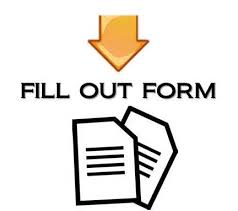Analisa Pemahaman Perhitungan PPh 21 Berdasarkan UU HPP pada Karyawan Kantor Konsultan Pajak
Abstract
Keywords
References
Baradja, L., Yuanita, Y., & Budi, A. G. W. (2020). "Penerapan Self Assesment System Pph Pasal 21 Untuk Umkm Se Jakarta". Jurnal Berdaya Mandiri, 2(2), 408–418. https://doi.org/10.31316/jbm.v2i2.749
Burta, F. S. (2018). "MEKANISME PERHITUNGAN PAJAK PERORANGAN DENGAN PROGRAM E-BILLING DI KANTOR PELAYANAN PAJAK PRATAMA METRO". 1, 430–439.
D. Muljono. (2006). Akuntansi Pajak. Yogyakarta: CV. Andi Ofset
Dedi, G. W. J., & Sondankh, J. J. (2017). "Analisis Penerapan Akuntansi Pajak Penghasilan Badan Pada Pt. Bpr Dana Raya Manado". Jurnal EMBA, 5(2), 992–1002.
Keuangan, K., Indonesia, R., & Pajak, D. J. (2016). PEDOMAN TEKNIS TATA CARA PEMOTONGAN, PENYETORAN DAN PELAPORAN PAJAK PENGHASILAN PASAL 21 DAN/ATAU PAJAK PENGHASILAN PASAL 26 SEHUBUNGAN DENGAN PEKERJAAN, JASA, DAN KEGIATAN ORANG PRIBADI. September 2016, 1–14.
Zuriah, Nurul. (2009). Metodologi Penelitian Sosial & Pendidikan. Jakarta: Bumi Aksara.
Harjanti, Ririh Sri, dkk. (2023). Peningkatan Kemampuan Perpajakan dalam Pelaporan SPT Masa PPh 21 pada Siswa SMK Negeri Kota Tegal Berdasarkan Undang-Undang HPP. Jurnal Surya Masyarakat, 5(2), 179-185.
Sharah Puan Hany; Tasdik Mahadito; Vani Alsilana; Zahra Zuhrotun Nafi’ah; Ferry Irawan. (2023). Sanksi UU HPP STAN.pdf.
Surabakti, W. (2016). "Analisis Perencanaan Pajak Untuk Pph Pasal 21 Pada Pt. Pegadaian (Persero) Cabang Tuminting". Jurnal Riset Ekonomi, Manajemen, Bisnis Dan Akuntansi, 4(1), 77–86.
Widyasari, Dewi, S., & Nataherwin. (2022). "Analisis Faktor Yang Mempengaruhi Wajib Pajak Untuk Melakukan Tax Evasion". AKMENIKA: (Jurnal Akuntansi & Manajemen), 19(2), 663–669.
Refbacks
- There are currently no refbacks.
Copyright (c) 2023 PRiNEB (Parade Riset Nasional Ekonomi dan Bisnis)
Indexed by:








